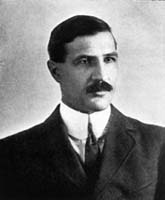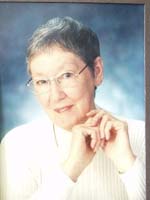Theodore Goodridge Roberts
Categories: Male Authors - Anglophone Authors - Poets - Novelists - Saint John River Valley

Source: University of Pennsylvania Digital Library
Biography
George Edward Theodore Goodridge Roberts (“Thede”) was born in the old Rectory of St. Anne’s Parish in Fredericton, New Brunswick, on July 7, 1877, to Emma Wetmore Bliss and Reverend George Goodridge Roberts. Though he was perhaps better known in England and the United States than in Canada, the writings of the man who was youngest brother of Sir Charles G. D. Roberts and cousin to Bliss Carman are considered distinguished even within his literary family.
A graduate of the Fredericton Collegiate School, he entered the University of New Brunswick in 1893 but did not complete a degree. He contributed verses to both The Independent and The Century while still in his teens, and became a sub-editor of The Independent in 1897, at age 19. This work led him to travel the globe, acting as a special correspondent in Tampa and Cuba during the Spanish-American War (1898) and in Newfoundland (1899). His novel Hemming the adventurer (1904) is based on this experience.
By 1900, Roberts had established Newfoundland Magazine and was working as its editor. In Newfoundland, he collected a wealth of information about outport life and history that formed the basis of his Newfoundland novels and his tales of the Beothuks. During World War I, he served with the 12th Battalion of the Canadian Army in France and England, the wartime adventures of which provided material for several novels and an official account of the war, Thirty Canadian V.C.’s, 23rd April 1915 to 30th March 1918.
A prolific writer, Theodore Goodridge Roberts published more than 30 novels, including The Red Feathers (1907), Captain Love (1908), Comrades of the Trails (1910), A Cavalier of Virginia : A Romance (1910), The Harbour Master (1913), The Wasp (1914), The Red Pirogue (1924), and The Golden Highlander (1929). His novels, aimed at a juvenile readership, are tales of adventure and romance that examine the universal struggle between good and evil, and uphold the basic virtues of courage, honesty, fair play, and self-reliance.
Roberts’ poetry is his serious artistic accomplishment. His poetry, staggering in both quantity and variety, shows a love of nature, a keen eye for local color and detail, and an ear for clean rhythm and rhyme. His publications include The Leather Bottle (1934), and Northland Lyrics, written with William Carman Roberts and Elizabeth Roberts Macdonald (1899). Roberts also published over 100 pieces in periodicals, chiefly in The Canadian Magazine, The Youth’s Companion, and The Independent.
In 1930, Roberts was awarded an honorary doctor of literature degree from the University of New Brunswick, and in 1934 he was named a fellow of the Royal Society of Canada.
Roberts married Frances Seymour Allen in November 1903, and together they had four children : William Goodridge, Dorothy Mary Gostwick, Theodore Frances Bliss, and Loveday who died in infancy. The couple spent time in Barbados, England, France, Ottawa, Toronto, Fredericton, and other parts of Canada. Theodore Goodridge Roberts died at Digby, Nova Scotia, on 24 February 1953.
|
Literary Prizes |
|
|---|---|
| Fellow of the Royal Society of Canada - 1934 | |
| Honorary Doctorate, University of New Brunswick - 1930 |
|
Featured Publication |
||||
|---|---|---|---|---|
|
The Leather Bottle (1934) |
Excerpt: Returning
|
|||
Find this author in the New Brunswick public libraries catalogue.
Source(s):

